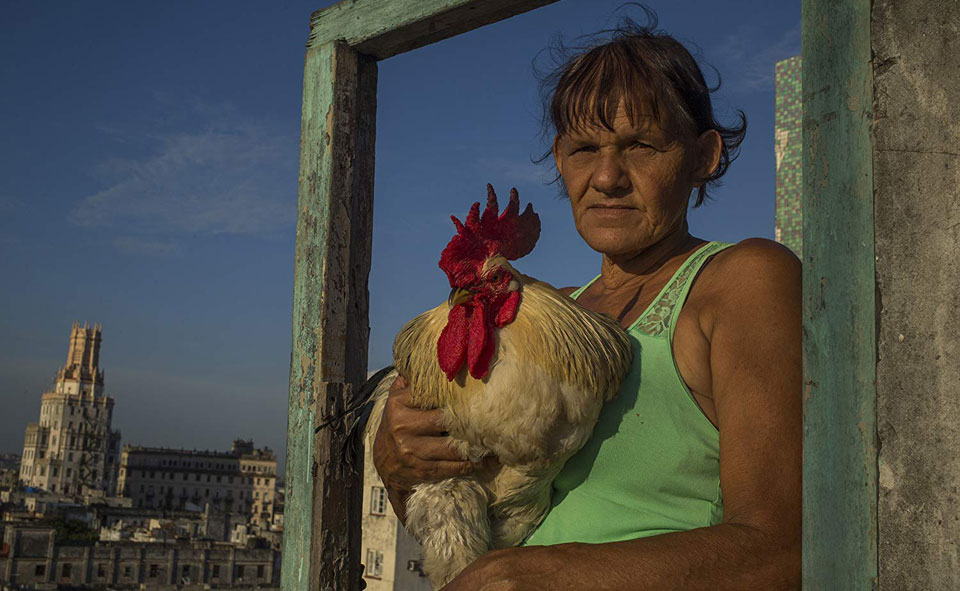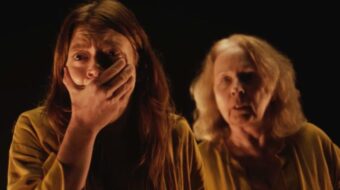
TOTONTO—North America’s premiere Hot Docs Festival in Toronto featured several new and intriguing documentaries from Latin America. A few stand out as reminders of atrocities that were committed in the struggle for social liberation across the continent. Still reflecting on the unresolved crimes committed during the 1970s in Chile, Pachi Bustos’s Haydee and the Flying Fish follows a woman searching for closure from crimes committed against her at a naval base during the Pinochet reign of terror. Taken prisoner after the military coup, Haydee, 21, pregnant and with an 18-month-old child, was tortured by her captors who were never identified or charged with any crimes. Her son lived but the child in her womb died, and later its ashes were placed at the naval base. In a highly poetic manner, the doc serves as a final resolution for the protagonist as she officially files charges against the torturers, and removes the ashes from the naval base, spreading them to the winds in a ship where flying fish sail mid-air. While there were many more who suffered through the ordeal, this is an extended and detailed story about just one victim of the fascist takeover of Chile. Thousands were tortured, children were killed in front of parents, or kidnapped never to be seen again. The country is still suffering from the collective pain of a military coup (with broad CIA support) ousting Salvador Allende, a democratically elected socialist president. See the trailer here.
Just up the coast from Chile is another country suffering from years of turmoil. In 1980, Peruvian government forces began a battle with Sendero Luminoso (Shining Path), a Maoist guerrilla group, one of several calling themselves the Communist Party. The second bloodiest war in South America has continued to the present day taking many victims along the way. In The Search, protagonists from both sides of the long, bloody struggle search for the truth and a resolution to the years of violence. They are searching for a mass grave of victims of Sendero Luminoso, a terrorist group that often targeted peasants, Natives, labor leaders and other leftist groups. One scene shows the discovery of an untouched SL jungle camp from the 1980s, containing revolutionary paintings of Mao, Lenin, Che, and other historic artifacts of struggle. The film avoids taking a political position, attempting to find a humanist solution in the search. The trailer is here.
And just up from Peru is Colombia, another country saturated with violence and blood for decades. Since the late 1950s over a quarter million people have been killed in the longest and bloodiest war in South America. Here, the main opponent of the government is the communist guerrilla FARC (Revolutionary Armed Forces of Colombia). Many of the wars in Latin America were fired up by fierce anti-communism inspired by the United States and its protection of multinational corporations exploiting the rich resources of the region. While this situation advanced poverty, unemployment and chaos, leftist groups emerged, some utilizing extreme methods to combat unbearable social conditions.
The film Bojaya: Caught in the Crossfire documents an event that took place in 2002 when government-sponsored paramilitaries invaded a little town and gathered locals as human shields inside a church in their fight against FARC. Most everyone died when FARC dropped a small bomb on the church, not realizing locals were inside. This film, like the previous mentioned, also seeks to find resolution and hope in reconciliation. The Irish and Russian film crew knew little about the people and their history but took a humanizing approach following a few of the survivors who tell their powerful stories of healing. One of the protagonists lost 32 family members in the attack, and has now became a community leader searching for solutions. In 2016, a truce was established between FARC and the government, and weapons were laid down. But there is fluctuating lack of trust, while more dangerous drug cartels are filling the void left by FARC, creating much more violence now. Many of those who have taken on the task of telling the truth and enforcing the peace treaty have been assassinated.

It’s rare to see a film about Cuba that doesn’t attack the Revolution. So here’s a true gem from Quebec—a brilliantly conceived personal study of Cubans who have chosen to live high above the streets of Havana, atop hotels, apartment buildings and other highrises. Directed by Pedro Ruiz, Havana from On High provides compelling stories from roof dwellers enjoying the city away from the sound of the streets. Most dwellers live within peaceful homemade setups created from the best of remaining materials. There are a lot of stories: An aging woman who fought alongside Che during the Revolution, a joyous man who defines himself now as “normal gay,” an electronics repairman who carries his repair jobs up and down many flights of stairs but refuses to move his business to ground level. It’s an entire cross-section of the people who have dealt with the hardships caused by a fierce, long-lasting economic blockade of the country. There are several stories about pigeons that provide income as carriers for the government, flower growers free of insects and pests, a talented poet who raps with drums; a dancer moving to the soundtrack, and a Canadian who moved to Havana because he was “saved by Cuba.” Many feel free high up, some stay up there most of the time while others go down every day. By the end you feel you have dozens of new friends ink this infectious, unique film. The trailer can be viewed here.
There were several other important films from Latin America shown at Hot Docs that I couldn’t fit in this review. The Brazilian doc Edge of Democracy, which opens this week on Netflix, covers the recent actions taken against former progressive leaders, Lula da Silva and Dilma Rousseff. Important films from Mexico included The Guardian of Memory dealing with drug cartels and conflict zones that feed the growing numbers of people fleeing for the border.










